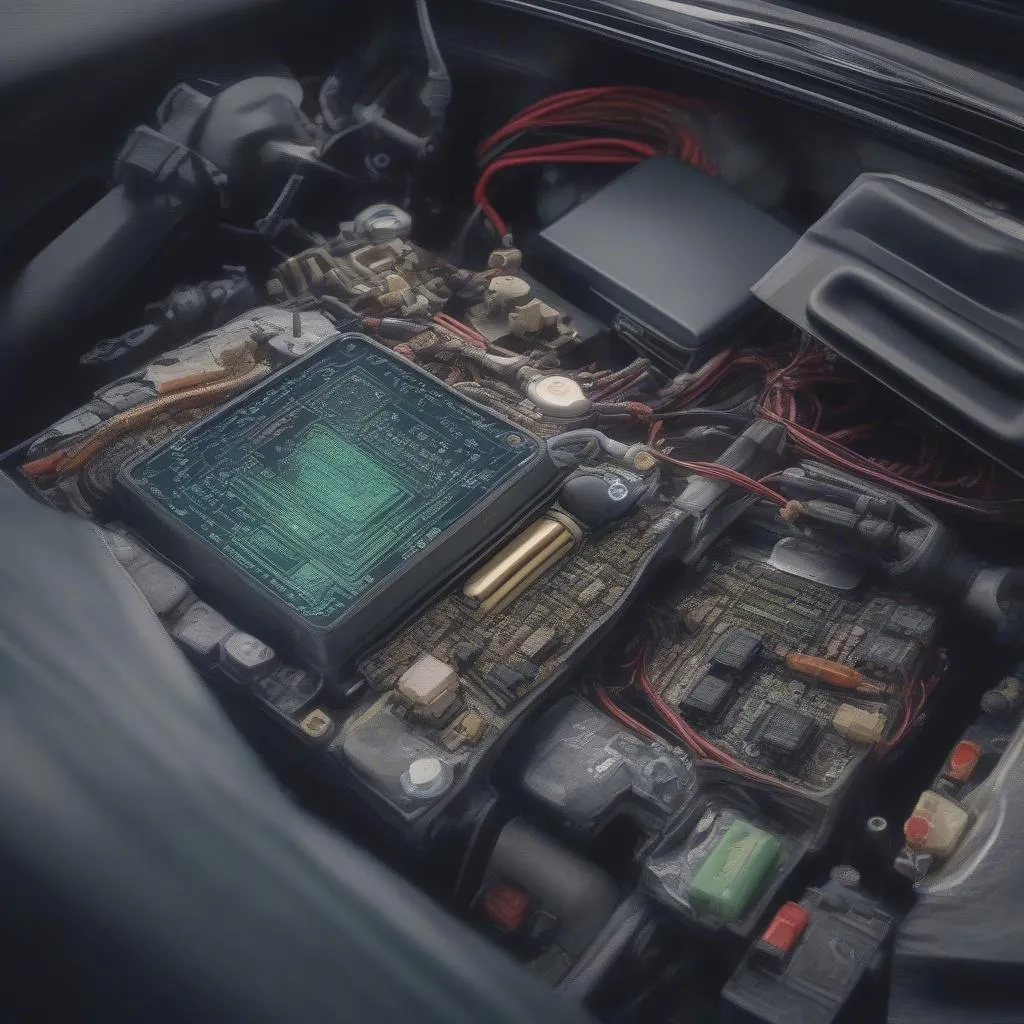Remote brake lights warn, a frustrating and potentially dangerous issue, can stem from various causes within your vehicle’s complex electrical system. Understanding how to diagnose and fix these problems is crucial for maintaining road safety and avoiding costly repairs. This article provides expert insight into the common causes of remote brake light warnings, effective troubleshooting steps, and even remote software solutions that can help resolve the issue.
Decoding the Remote Brake Lights Warn Signal
What does it mean when your car displays a “remote brake lights warn” message? This alert signifies a problem with your brake lights, specifically those controlled by a remote module, such as a trailer brake controller. This doesn’t always mean your brake lights are completely out, but it does indicate a potential malfunction that needs immediate attention. Ignoring this warning could lead to accidents, as other drivers may not be aware when you’re braking. You might be interested to read about common brake light issues in a Nissan Altima, discussed in this article: brake warning light nissan altima.
Common Causes of Remote Brake Light Warnings
Several factors can trigger a remote brake lights warn signal:
- Faulty Wiring: Damaged or corroded wires between the remote module and the brake lights are a common culprit. This can be caused by exposure to the elements, wear and tear, or even rodent damage.
- Malfunctioning Remote Module: The remote module itself could be defective, failing to send the correct signals to the brake lights.
- Blown Fuses or Relays: A blown fuse or faulty relay in the brake light circuit can interrupt the power supply to the lights, triggering the warning. For more information on relays and brake warning lamps, check out this resource: brake warning lamp check relay.
- Bulb Failure: While less common with remote systems, a burned-out brake light bulb can still cause the warning to appear.
- Software Glitches: In modern vehicles, software controlling the remote module can sometimes experience glitches, leading to erroneous warnings.
Troubleshooting Remote Brake Light Warnings
Here’s a step-by-step guide to troubleshooting the issue:
- Check the Brake Lights: Visually inspect all brake lights, including those on any attached trailers. Replace any burned-out bulbs.
- Inspect the Wiring: Carefully examine the wiring connecting the remote module to the brake lights, looking for any signs of damage, corrosion, or loose connections.
- Check Fuses and Relays: Locate the fuse box and identify the fuse and relay associated with the brake lights. Test them for continuity and replace any faulty components.
- Test the Remote Module: Use a multimeter or diagnostic scanner to test the remote module’s functionality.
- Software Diagnostics and Reprogramming: For software-related issues, a diagnostic scanner can identify and clear error codes. In some cases, remote software updates or reprogramming may be necessary. This is where remote diagnostics and programming services can be invaluable.
“Remote diagnostics have revolutionized the way we troubleshoot and repair vehicle issues,” says John Miller, Senior Automotive Electrical Engineer. “By accessing the vehicle’s systems remotely, we can quickly pinpoint the problem and often resolve it without the need for a physical visit to the workshop.”
Remote Solutions for Brake Light Issues
Remote diagnostics and programming can be particularly beneficial in addressing software-related brake light problems. Specialized software allows technicians to access a vehicle’s systems remotely, diagnose the issue, and even upload software updates or reprogram modules to fix the problem. This eliminates the need for the vehicle to be physically brought to a repair shop, saving time and money. Learn more about addressing brake warning lights in an Audi Q7: audi brake warning light q7. For Mercedes E320 ESP and brake warnings, you can refer to this article: e320 mercedes esp red brake warning light. If you’re dealing with an E36 brake circuit warning, you can find helpful information here: e36 brake circuit warning.
Conclusion
Addressing a “remote brake lights warn” message promptly is vital for your safety and the safety of others. By understanding the potential causes and following the troubleshooting steps outlined above, you can effectively diagnose and resolve the issue. Leveraging remote diagnostic and programming services can provide quick and efficient solutions for software-related problems, getting you back on the road with confidence.
“Remote programming allows us to quickly deploy software fixes and updates, minimizing downtime for the vehicle owner,” adds Maria Garcia, Lead Automotive Software Engineer.
FAQ
- What does “remote brake lights warn” mean? It indicates a problem with the brake lights, particularly those controlled by a remote module.
- Is it safe to drive with this warning? No, it’s not safe. The malfunctioning brake lights could lead to accidents.
- Can I fix this problem myself? Depending on the cause, you might be able to fix it yourself by replacing bulbs, fuses, or repairing wiring. However, for more complex issues, professional help is recommended.
- What are the benefits of remote diagnostics? Remote diagnostics save time and money by allowing technicians to identify and sometimes fix problems without physical access to the vehicle.
- How much does remote programming cost? The cost varies depending on the specific service and vehicle, but it is generally more affordable than traditional repair methods.
- What if the problem persists after troubleshooting? Consult a qualified automotive electrician for further diagnosis and repair.
- How can I prevent future remote brake light issues? Regular vehicle maintenance, including inspections of the wiring and electrical system, can help prevent these issues.

